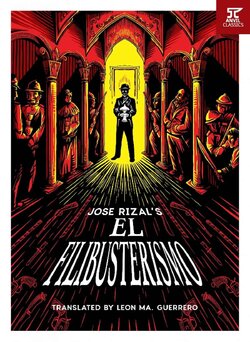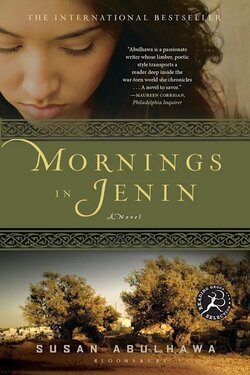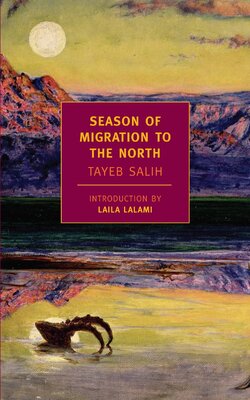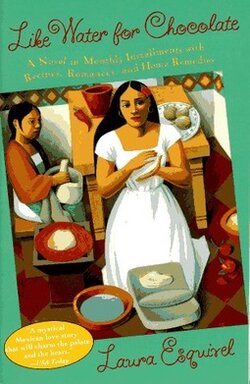- Link to article
- Archive
- Previous A&N thread on "dark academia"
- Previous thread on why dark academia is racist
A few days ago, I began putting together a post compiling some dark academia books written by authors of color. Originally, the post was just going to be your basic listicle. But as I slowly realized I was having trouble looking for more diverse – and especially non-Western – titles in this sub-genre I began to wonder if there wasn’t a deeper, more insidious problem with dark academia as a genre. A problem that, like most of the problems in this world, has its roots in bigotry against marginalized communities
I’ll be honest. It’s not a problem that’s occurred to me before I put that list together. Although dark academia has boomed thanks to the veritable powder keg that is social media in the time of COVID-19, it’s not really something that piqued my interest. At most, I saved a couple of photos on Pinterest, liked a handful of posts suggesting dark academia inspired outfits on Instagram, and read exactly one book described as dark academia. (That book was Ace of Spades, which is really top-tier grade-A dark academia. READ IT.)
But over time, my interest in the sub-genre grew and I began delving more into lists of recommended books. I then decided that I wanted to dissect dark academia as a fictional genre, take a look at what makes it appealing, but also look into what it fails at. So what exactly is this so-called problem with dark academia? Read on!
What is dark academia?
If you’ve been here long enough, then you probably know by by now that any recommendation or discussion list I write almost always begins with a definition of the terms we’ll be covering. (See my definition of “gothic horror“, “mystery vs. thriller” “queer novella“, and “badass female character” to name a few.) Last remaining vestiges of the desire for a career in the academe, I suppose.Dark academia is both an aesthetic and a subculture, borne on the tide of social media. When you say “dark academia”, most people instantly think of gothic architecture, autumn and/or rainy aesthetics, books, and warm neutral color palettes.
Let’s zoom in a little on the subject of books. Dark academia books often refer to books that feature the dark academia fiction genre (which I go into more later). But the term can also mean classic literature that the dark academia movement itself has deemed its “must-reads” (i.e. Western literary classics such as The Picture of Dorian Gray, Byron, Shelley, Shakespeare’s tragedies, the Brontë sisters, Virginia Woolf, Fyodor Dostoevsky, etc. as well as Greek and Roman literature and philosophy).
There’s also such a thing as dark academia movies. Dead Poets Society is, of course, the most famous one. But there’s also Kill Your Darlings, Mary Shelley, Tolkien, The Riot Club, and of course all the adaptations of The Picture of Dorian Gray. Each of these movies typify the aesthetic, either by featuring a group of young people attending an elite education institution, or adapting into film one of the accepted literary “canon works” of the fiction genre.
Fashion, reading habits, and the general consumption of media aside, I think it’s safe to say that dark academia mostly involves the idea of the pursuit of knowledge and the overall romanticization of academic life. Admittedly, such participation in higher learning may be couched in dark extravagance and luxury, as evidenced by the aesthetic’s emphasis on maximalism. But at its heart, dark academia is all about the power and beauty of knowledge.
Dark academia vs. light academia
As dark academia grew in popularity, a splinter aesthetic branched off and headed in the opposite direction. This, of course, is light academia. Just like dark academia, light academia focuses on themes of discovery and/or knowledge. It also tends to emphasize elite institutions of higher learning, and also makes heavy use of autumn imagery.However, unlike its darker counter, light academia – as implied by its name – tends to lean toward the lighter end of the spectrum. In fashion, it still mostly involves warm neutrals, but these skew toward beige, cream, sage green, and camel rather than black, brown, gray, and navy blue.
In terms of books, light academia as a genre tends to focus more on the positive aspects of academic life. It often features themes of optimism, lifelong friendship, gratitude, and wonder. Even the “must-reads” of light academia are of a more benign, cheerful sort: Jane Austen, Little Women, Shakespeare’s comedies, The Little Prince, George Eliot (especially Middlemarch), The Secret Garden, Anne of Green Gables, the Time Quintet by Madeleine L’Engle.
However, for purposes of this blog post – that is, to discuss the problem with dark academia – I won’t be making any distinction between light and dark academia. Although there is a difference between the two, I personally feel that that difference is superficial. Most of the problems with dark academia that I discuss in this blog post are prevalent in both light and dark academia, so for brevity’s sake I’ll only be referring to dark academia from here on out.
What is dark academia as a fiction genre?
We’ve already established that when it comes to books, dark academia can mean two things. It can mean books that are considered canon or must-reads in the genre. But dark academia as a fiction genre is something else entirely. In fact, plenty of the literary canon of both light and dark academia aren’t even of the academia genre at all!As a fiction genre, we can say that academia fiction is usually set in an educational institution considered in-universe as elite and/or exclusive. It also possesses themes of the pursuit of knowledge and/or the discovery of a secret. The light and dark academia sub-genres differ in only one way: whereas dark academia possesses an element of the harmful and/or undesirable aspects of life in academia, light academia focuses more on the pleasurable parts of student life and strives toward an objectively happy ending.
So, what’s the problem with dark academia?
I’ve talked at length about what dark academia is. But what exactly is the problem with dark academia? It’s just a bunch of young people wearing tweed or plaid, annotating their books, listening to classical music, and alternately waxing poetic or philosophical, right?Perhaps on the surface, that’s what dark academia is. But only on the surface.
But at some point, fans of the genre do have to admit to themselves that there is a problem with dark academia. At the core of dark academia is a set of highly problematic foundations, predicated on certain bigotries and prejudices. And I personally believe that someone who would call themselves a true fan of the genre would want to examine those problematic foundations, in the hopes of contributing to their dismantling in their own little way.
White and Western supremacy
Let’s just get this out of the way. Dark academia walks hand in hand with white and Western supremacy. Do I mean to say that dark academia fans are white and/or Western supremacists? Not at all. But the genre itself certainly is.The obsession with Western education
What are the settings often featured in dark academia books? Elite educational institutions mostly located in Europe or the United States. Specifically: Oxford, Cambridge, and the Ivy Leagues. Even YA books whose characters are still in high school aren’t spared. They’re often students at posh preparatory schools on the East Coast or Western Europe. Quite a few are set at that old standby of YA dark academia: boarding school.Even when I wrote my list of dark academia books by authors of color, I could not find a single book that was not set either in the United States or Europe. I find this quite curious, considering that elite academic institutions are not a thing that only exists in the United States or Europe. My own alma mater, the University of Santo Tomas, was founded a whole twenty-five years before Harvard. And in fact the oldest university in the world, the University of al-Qarawiyyin, is located in Morocco.
Kind of makes you think, doesn’t it?
What constitutes a classic?
One of the major features of dark academia as a genre is a focus on classic literature. Which in and of itself again is not a bad thing! I have my own favorites amongst the Western literary canon. The Picture of Dorian Gray and Mary Shelley’s Frankenstein are among some of my most favorite books. Also, I definitely count myself as an Austen fangirl. But I have to admit that it bothers me a little that the classic must-reads defined by the dark academia genre are all, as I said, Western literary canon.Classic literature is not the sole province of the West. And in my opinion, if one wants to be considered well-read in the classics, one has to go beyond the classics of the United States and of Europe. Latin America and Africa have provided some of the most compelling classic reads of the modern reader. And in fact, the first novel ever, The Tale of Genji was written in Japan by Lady Murasaki Shikibu.
If dark academia wants to posit itself as a genre that emphasizes the importance of classic literature, it needs to look beyond what the West has declared recognized classic literature. There’s a whole world of classics out there written by authors whose realities are vastly different from those undergone by the authors of accepted Western canon, affected by things like colonialism and imperialism that non-racialized people haven’t experienced. In the spirit of discovery that the academia genre emphasizes, it would be a shame not to expand what the genre considers must-reads.
Acceptable diversity
The funny thing is, dark academia as a fiction genre has done fairly well at embracing a certain type of queerness. One of the most famous dark academia novels of all time, If We Were Villains, is queer. And there’s so much more. Plain Bad Heroines. A Lesson in Vengeance. These Violent Delights (the one by Micah Nemerever, not Chloe Gong’s Romeo & Juliet retelling). They Never Learn. Vicious. Summer Sons. What do they all have in common? They’re all queer books written by white authors. Which doesn’t automatically make them bad, by the way! I loved Plain Bad Heroines and These Violent Delights, and I’m looking forward to reading and annotating If We Were Villains. But queer representation – or to be more specific, white queer representation – doesn’t seem to be a thing that the genre lacks.Let me tell you, when I started writing my list of dark academia books by authors of color, I originally planned for it to be a list of diverse dark academia books. The post originally contained twenty books! But then I realized that of those twenty books, most of them starred white queer characters and were written by white queer authors. When I made the decision to whittle my list down to dark academia by authors of color instead, the list shrunk down to the 9-book long blog post that went live a few days back. That’s how much white queer dark academia literature there is out there.
I don’t mean to imply that white queer authors and their works shouldn’t be considered diverse. After all, their queerness means they are a marginalized community. And queer works of all kinds should be uplifted and celebrated. But the prevalence of white queerness in dark academia compared to books written by authors of color really makes you think about what dark academia considers palatable diversity. After all, the whiteness of a white queer person informs their queerness. Just as the race and/or ethnicity of a queer racialized person informs their queerness. And it seems to me that in the dark academia genre, a certain kind of diversity – one that is more comfortable to white supremacy – has been deemed acceptable.
The myth of academic merit
We’re all raised with the idea that further education is one of the best ways to better ourselves and secure bright futures. And we’re all told that institutions of higher learning are level playing fields. Everyone is graded on their diligence and willingness to work hard, and everyone, regardless of background, has a shot at success.Except by now we should all know that that’s a load of BS. The truth is, institutions of higher learning are still, by and large, inaccessible to a large swathe of our population.
You would think entrance exams would be the kind of gatekeeper that ensures only the best and brightest enter the hallowed halls of a university. But even there, classism rears its ugly head. Many university entrance exams cost money to take, and those sums are not the kind you can thumb your nose at. (For example, back when I was applying to universities I paid ₱600 each to take the entrance exams at Ateneo, La Salle, and UST, and ₱450 to take the UPCAT. That’s a total of ₱2250 which is not a small amount.)
But even before taking the exams necessary to get into universities, an individual’s circumstances all heavily affect their ability to pursue higher education. Some students are from less well-off families and need part-time jobs, and so wouldn’t be able to devote all their time to studying or preparing for entrance exams. Others don’t have the money to pay for internships, sports, dance, or other extracurricular activities that look good on college applications. Textbooks. Dormitories. Food. Scholarships exist, but there are barriers to those too, such as access to the Internet or digital devices. In fact, access to the Internet and digital devices is a barrier to almost all aspects of academic life. The lack of a smart phone or a computer makes it impossible to do so many things, from actual schoolwork all the way to applying for the program itself.
All of that said, is it wrong that dark academia focuses on elite institutions of higher learning? Not at all! Such settings provide a very interesting framework within which to set a story. My issue with the intense focus that dark academia has on exclusive higher education is that the implications of such are never really looked at. They’re never criticized or deconstructed. Instead, such elitism and classism is often up as something to be admired, something to reach for. It rings patently false when faced with the reality that systemic, institutionalized barriers to these hallowed halls exist. Which to me is a shame, because a dark academia book that takes a look at the racist, classist, and elitist underpinnings of higher education is a book I’d be very interested in reading.
(And on that note, go read Babel, or the Necessity of Violence: An Arcane History of the Oxford Translators’ Revolution by R.F. Kuang. If The Secret History left a bad taste in your mouth, this is the book for you.)
Disability, chronic illness, and toxic behavior
Let’s be real. Most of the world isn’t friendly to the disabled, the neurodivergent, and the chronically ill. But the world of the academe is doubly so. There are way too many horror stories of unsympathetic professors, unhelpful school administration, and acts of ableism that go unpunished to ignore this one, simple truth. Academia is ableist.And yet, that truth never seems to make its way into dark academia – both as an aesthetic and as a genre. Just as the genre never seems to acknowledge the reality the class barriers exist, it also doesn’t seem to acknowledge the reality of disabled, neurodivergent, and/or chronically ill students.
Another one of the things that puts the dark in dark academia is the emphasis on destructive behavior adopted by students in pursuit of their degree. We’ve all been there. Staying up until the wee hours of the morning studying. Not drinking enough water and making coffee, alcohol, and/or cigarettes our main source of energy. But that’s just the physical aspect of it. There’s also the emotional, spiritual, mental, and even financial aspect. Cutting off and/or seeking revenge against academic rivals. Petty fights and spreading rumors. Losing touch with your faith, if you have any. Participating in or initiating gaslighting or bullying. And so, so, so much more.
Is it bad that these things are portrayed in the dark academia genre? Again, no. I love a good dark novel myself! But the problem with dark academia is that it romanticizes – I would almost say fetishizes – those things. The genre makes no qualms in stating that such behavior is justified, even expected, in the pursuit of knowledge. And such norms are never challenged or deconstructed. Instead, they are made part and parcel of the whole higher learning experience, adding even more to the institutionalized and systemic barriers that already exist. In short, it’s a vicious cycle.
Can anything be done to solve the problem with dark academia?
What does the problem with dark academia mean for the genre? Does it even actually mean anything, given that this is all fiction? Well, I personally feel like dismissing something as “just fiction” is reductive and, to be honest, a perfectly foolish notion for a reader to entertain. Yes, the fact that it’s fiction means it’s not really happening. It’s fake. But as readers, we’ve all seen firsthand the power that fiction can have on reality. The phrase “life imitating art” exists for a reason. And I think it’s shallow and ignorant to dismiss the effect fiction has on real life.So what do we do about dark academia?
Acknowledgement is the first step
It’s like they say. The first step to solving a problem is to acknowledge that there even is a problem in the first place. That’s why I wanted to write this blog post. I wanted to get out all the thoughts and misgivings on the genre that I had so I could explore more within it with my mind in order. I want to read more dark academia books aware of the genre’s missteps and what the genre lacks so that I know what to look for, and what the genre will offer in the coming years.As the publishing industry diversifies even further (although we all know what an uphill battle that’s been), I have faith that more and more authors of marginalized backgrounds, especially authors of color, will come out with dark academia books. And I for one am eager to see what comes next.
And on that note…
Diversify your reading in the genre
There’s a reason If We Were Villains and The Secret History are the most popular dark academia books. They embody everything there is to love about dark academia and therefore took fans of the genre – not to mention the whole world – by storm.But there is a world of dark academia novels out there featuring realities and experiences that differ so vastly from our own. If dark academia’s central feature is the pursuit of knowledge and/or discovery, it only makes sense to seek out books written by authors of marginalized communities. Especially authors of color. These authors write from a new, unique viewpoint. And in the end, that’s something the academia genre always seeks in its book, right? The chance to gain more knowledge.
Diversify your reading outside the genre
Earlier, I mentioned that “dark academia books” can also include classic literature that is deemed as the “must-reads” of the genre, aside from books in the genre itself. As we all know, books like The Picture of Dorian Gray and Frankenstein are the standbys of classic literature that dark academia puts on a pedestal. But again, we remind ourselves: classic literature is not the sole province of the West. In fact, there are plenty of classics by authors of color out there that perfectly fit the aesthetic of dark academia.Here are some of my favorites:





Last edited:




